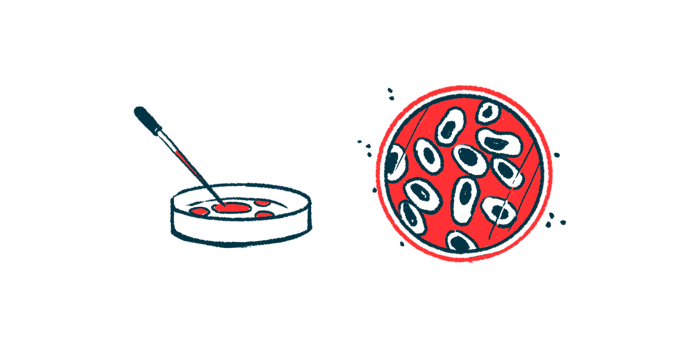New cell model hailed as platform for studying AADC deficiency
CRISPR-edited model derived from cancer that starts in immature nerve cells

A newly developed cell model has been called “a significant step toward understanding the molecular mechanisms of AADC deficiency” and one that offers a platform for preclinical testing of new therapeutic candidates.
“This model may pave the way for the development of precision therapies,” three researchers in Turkey and Germany wrote in “A CRISPR/Cas9 knockout model for AADC deficiency reveals structural loop3 instability as a key driver of catalytic failure,” a commentary to a study published in The FEBS Journal.
AADC deficiency is caused by mutations in the DDC gene, which encodes AADC, an enzyme needed to produce dopamine and serotonin, two key brain chemical messengers that help control movement, mood, and body functions. Without AADC, the neurotransmitters’ precursors build up, disrupting signaling in the brain and resulting in the neurological and physical symptoms associated with the disorder.
These symptoms usually begin in early infancy, and include delayed development, muscle weakness, and stiffness. Their severity depends on how much enzyme is produced and how well it functions, which, in turn, depends on the mutation.
Treatment options remain limited, but the recent gene therapy Kebilidi has shown promise and is approved in some countries. The therapy is only suitable for certain patients, depending on their age, how severe their symptoms are, and whether they can access it. For these reasons, there’s still a need for lab-based models to study new genetic variants and help develop other treatment options.
Testing two disease-causing mutations
Researchers in Italy developed a model in human cells derived from a neuroblastoma, a type of cancer that starts in immature nerve cells. The model was developed using CRISPR-Cas9, a molecular tool that can delete the DDC gene in the cells to “accurately [reflect] the biochemical [features] of patients with AADC deficiency.”
Two known AADC deficiency-causing mutations, R347Q and L353P, were introduced to study their effects.
Even though the production of AADC was restored with the introduction of the mutated gene, its activity remained absent. This mirrors findings where these mutations show “severely impaired enzymatic function,” the researchers wrote. Both mutations increased the flexibility of loop3, a part of the enzyme that helps it fold correctly. The mutations caused the misplacement of Tyr332, a building block for producing dopamine. This not only affected single building blocks, but also the overall structure of the enzyme.
The cell model can be used to test other disease-causing mutations and to screen for therapeutic candidates that might help the enzyme fold correctly or become more stable, thereby maintaining its function.
“Their … model of AADC deficiency, enriched by sophisticated structural biology, lays the groundwork for future mechanistic and therapeutic advances. This work exemplifies the power of interdisciplinary research in unraveling rare disease mechanisms and guiding the development of targeted treatments,” the researchers wrote.






